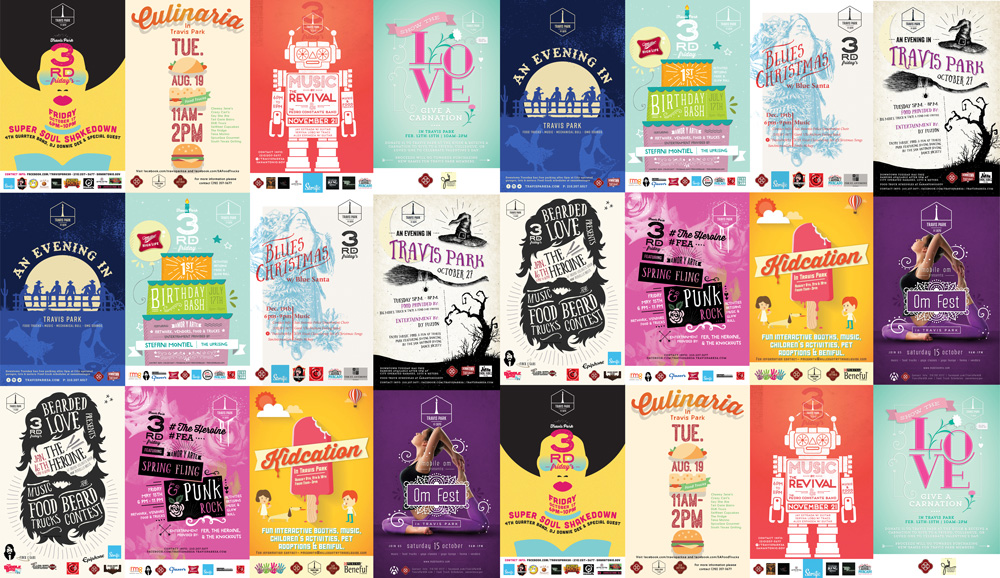Ideas Post
The Art of Direction: A Guide for Creative Directors in Marketing Agencies to Achieve Consistency and Collaboration
In the vibrant world of marketing, the role of a creative director is crucial. Discover how consistent and collaborative art direction can enhance your marketing campaigns.

In the vibrant world of marketing, where creativity is king, the role of a creative director is crucial. As the conductor of artistic vision and brand identity, the creative director carries the responsibility of ensuring that every piece of content strikes a chord with the target audience while staying true to the brand’s core. One of the most vital aspects of this role is maintaining consistent and collaborative art direction across all marketing endeavors.
Consistency: The Building Block of Branding
Consistency is the bedrock of effective branding. It nurtures trust, builds recognition, and crafts a unified brand experience for consumers. Be it a social media post, a print ad, or a website revamp, consistency in art direction ensures that every piece of content aligns with the brand’s values, aesthetics, and messaging.
As a creative director, it’s key to establish clear guidelines and standards for art direction. These guidelines should cover visual elements such as color palette, typography, imagery style, and tone of voice. By providing a roadmap for creative teams to follow, you empower them to consistently produce cohesive and on-brand content.
Collaboration: The Catalyst for Innovation
While consistency is key, it shouldn’t curb creativity. In fact, collaboration often leads to more innovative and captivating outcomes. As a creative director, creating a collaborative environment where ideas are freely exchanged and explored is paramount.
Promote cross-functional collaboration by bringing together members from different teams—designers, copywriters, marketers, and even clients—to brainstorm and ideate collectively. By leveraging diverse perspectives and skill sets, you can uncover fresh ideas and approaches that resonate with your target audience.
Additionally, welcome feedback as a catalyst for growth. Constructive criticism from team members and stakeholders can help refine and strengthen art direction, ensuring that it remains relevant and impactful.
Communication: The Bridge to Collaboration
Clear and open communication is the bridge that connects collaborative art direction. It is the creative director’s responsibility to effectively communicate the brand’s vision, objectives, and expectations to your team. Providing context and rationale behind creative decisions is necessary to ensure alignment and understanding.
Moreover, establish regular check-ins and touchpoints to keep everyone on the same page throughout the creative process. Whether it’s through in-person meetings, video conferences, or project management tools, consistent communication fosters transparency and accountability.
Leading by Example
As with anything in life, our actions speak louder than words. Creative Directors must lead by example by embodying the values and principles of consistent and collaborative art direction. Showcasing your commitment to quality and creativity sets the tone for the entire team and fosters a culture of excellence.
Invest in ongoing education and professional development to stay aligned with industry trends and best practices in art direction. By continuously refining your skills and knowledge, you can inspire and empower your team to push the boundaries of creativity while staying true to the brand’s identity.
In conclusion, consistent and collaborative art direction is the foundation of successful marketing campaigns. By championing these principles as a creative director, you can elevate your team’s work to new heights and deliver impactful results for your clients. Embrace consistency, foster collaboration, communicate effectively, and lead by example—these are the keys to mastering art direction in the ever-evolving landscape of marketing.
Let's build a tribe together
Ideas, Ideas, Ideas
Featured Work
We don’t just deliver - we make a difference.
Here’s a look at some of our most impactful branding, web, and campaign work. These aren’t just projects - they’re proof of what’s possible when bold ideas meet the right tribe.












